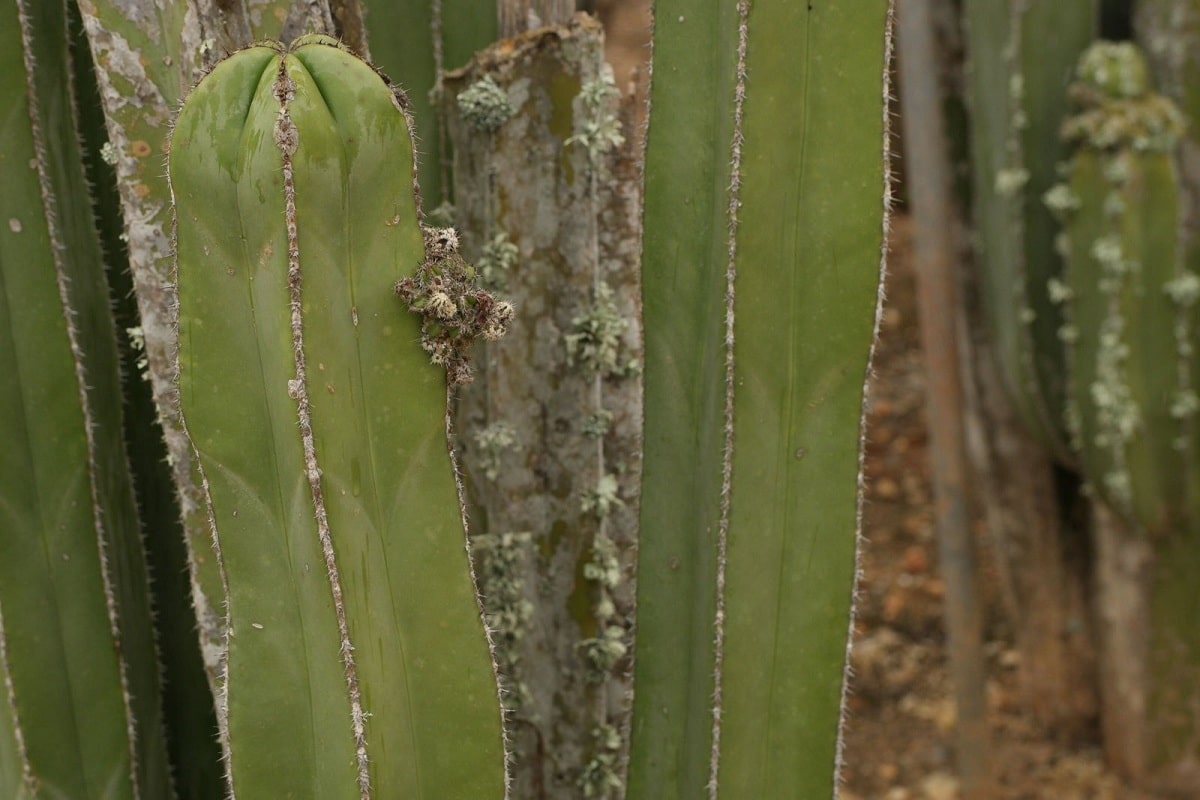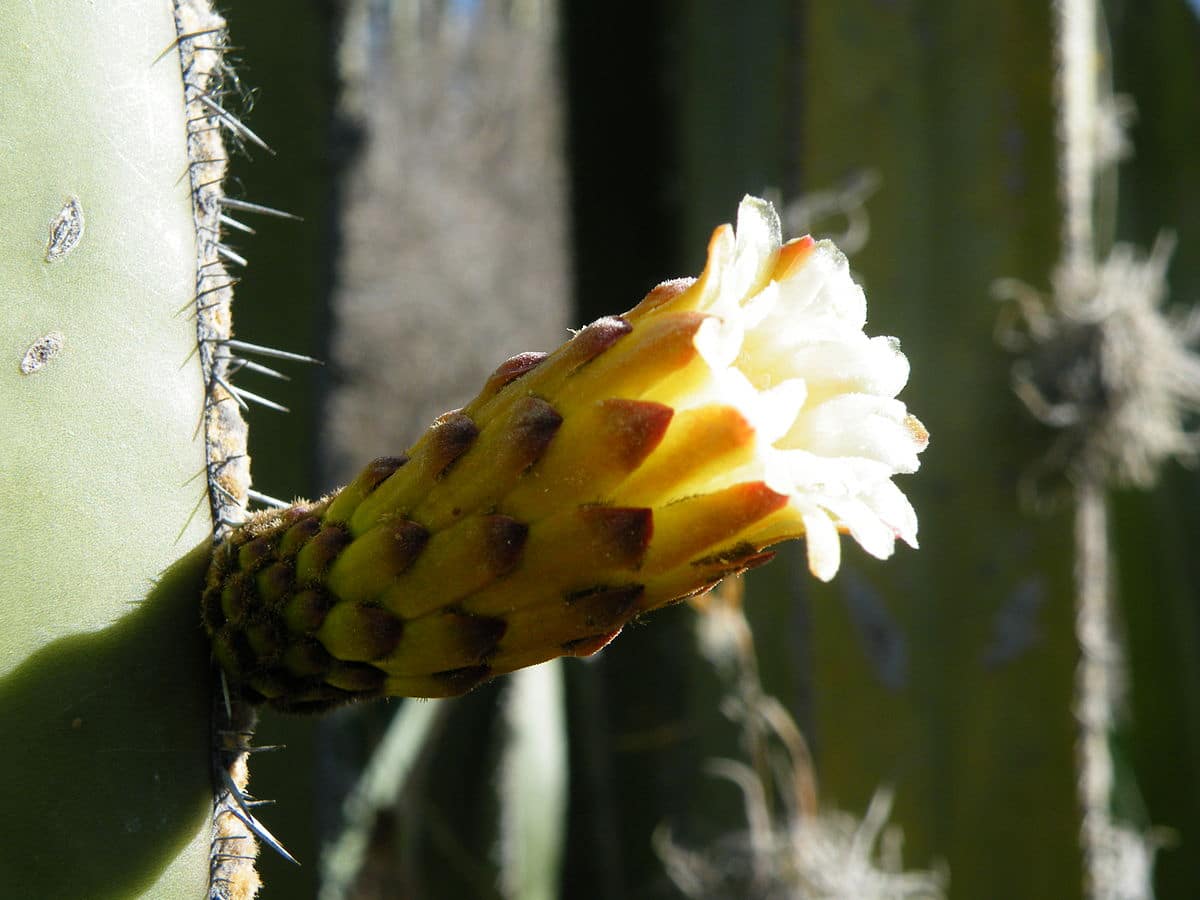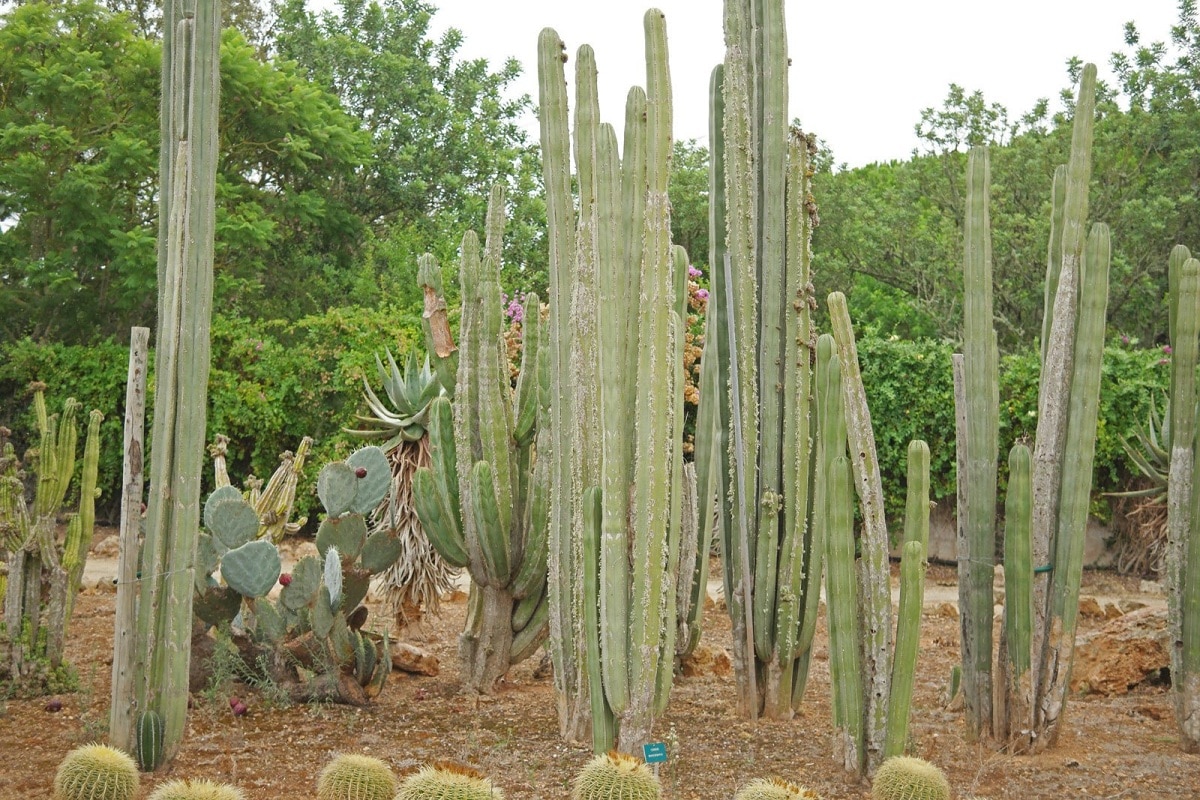
Today we are going to talk about a type of cactus that belongs to the group of succulents. Its about Pachycereus marginatus. It is a type of cactus native to Mexico where it is an endemic species. It is known by other common names such as jarritos, chilayo, cereus grande. It is perfect for decorating houses since it requires little care.
In this article we are going to tell you all the characteristics, uses and care of the Pachycereus marginatus.
Key features

It is a type of cactus that can reach a maximum height of about 8 meters and a diameter of about 15-20 centimeters if it is cared for in good conditions. Develop an erect stem, with a rounded and frequently branched shape of a light green color. It has 5-7 longitudinal ribs that are not too high. As expected, in this type of cactus we also find thorns.
All the spines are arranged along the ribs arranged in areoles that touch each other. The spines are short, thin and have a pale yellowish grayish color. In some cases, we see some specimens that have the spines with a more blackish color. As for its flowers, they are orange-white and reddish. They are flowers that increase their ornamental value in the flowering season. This time is in summer and lasts a few days. Normally it does not last more than a week, although it depends on the present environmental conditions. They are narrow, tubular flowers and are 3-4 centimeters long. Its funnel shape makes the style central and its standards have a yellowish color.
Its fruits are green and covered with smooth and elongated lines. They are often used for decoration forming hedges and barriers since it grows quite quickly. It can be used in cactus and succulent gardens, in rockeries and even in pots as they are younger. When they reach maturity it is difficult to have it in a pot since it occupied a large size.
Requirements of Pachycereus marginatus

This type of cactus needs some necessary requirements so that it can grow well. They grow fast as long as they are exposed to ideal environmental conditions. Its ideal exposure and location is in full sun and with high temperatures. As expected, the Pachycereus marginatus It is a type of cactus that stands out for having great resistance to drought and to tolerate long exposures to the sun directly. Winter climates that are humid and temperatures consistently below 8 degrees do not suit you.
As for the soil, the young cacti of the species Pachycereus marginatus They can be a mixture of 50% leaf mulch and the other 50% coarse sand. This combination of soil will provide you with all the nutrients you need to be able to branch sufficiently and grow in length. If we have planted it in a pot, it is necessary to wait until spring to transplant. This is because the winter seasons and low temperatures can cause some problems when it comes to stabilizing well in its new location. Therefore, if we wait for spring when the temperatures begin to rise, we will have a greater success in transplanting.
The risks should be very moderate and as long as wait for the soil to dry completely. In winter it is better to rest and not water manually. It does not need pruning, which is cactus, but it does appreciate a monthly fertilizer-based fertilizer for cacti. Above all, it is convenient to use this type of fertilizer in the spring and summer time.
El Pachycereus marginatus they resist pests well, although one of the most serious problems that you can have in a garden is excess humidity or irrigation. They can be easily propagated by cuttings and from seeds sown in spring.
Harvest of Pachycereus marginatus

Most of all these cacti are grown by propagating cuttings. To do this, it is done by cutting a branch and transplanting them into well-drained soil. It is important that the soil is capable of generating rain or irrigation water. The cactus must not flood under no circumstances since it will end up rotting. And we place the cactus in an empty container, we guarantee that its ends are covered before re-sowing. In this way, its stems are properly maintained and the dry ends will form the roots more easily for transplanting.
To harvest the Pachycereus marginatus you must wait for the months of May to June. Harvesting can be done from ripe fruits. These fruits fall to the ground being fully ripe. If the cactus is too tall and you don't want to wait, you can do a small harvest manually. To do this, it is convenient to use a ladder and be very careful with where we lean to avoid puncturing ourselves. The knife to cut the fruits must be sharp. It is advisable to wear clothing to avoid thorns.
The seeds are extracted from the fruits and can be separated from the pulp. Later it is rinsed and once clean they are placed in the open air to dry. They can be stored for several years in cool closed refrigeration. No type of germination treatment is necessary as they are easy plants to finish and grow. It is recommended to cultivate superficially on substrates that are not too wet and are well drained.
Other uses
As we have mentioned before, the Pachycereus marginatus its main use is ornamental. However, it is also known for its food uses. And it is that its fruit is edible and It can be used to make very tasty jellies and some jams.
From a very popular plant throughout Mexico and a very economical option. It is of great economic importance since it lives on the landscaping market and bought for ornamental use by farm owners who want it to function as a barrier to live fencing due to its strong thorns. This serves protection against intruders.
I hope that with this information you can learn more about the Pachycereus marginatus and their characteristics.
Excellent description of this magnificent cactus
Thank you very much jose.